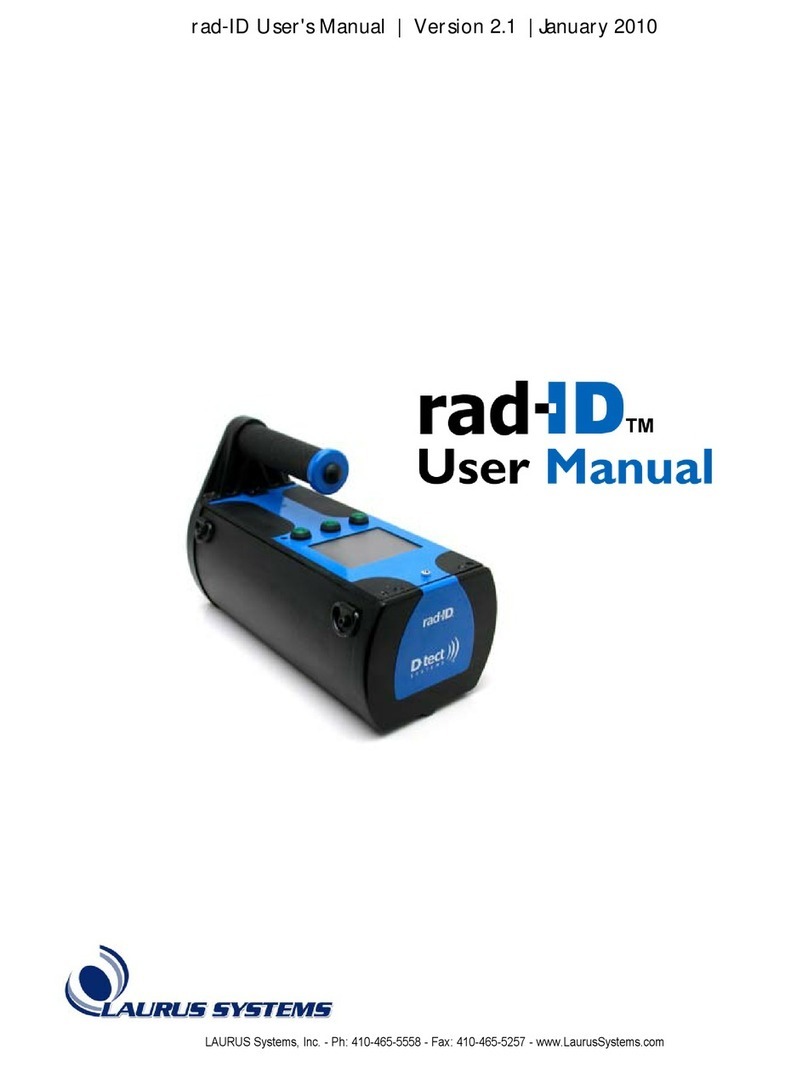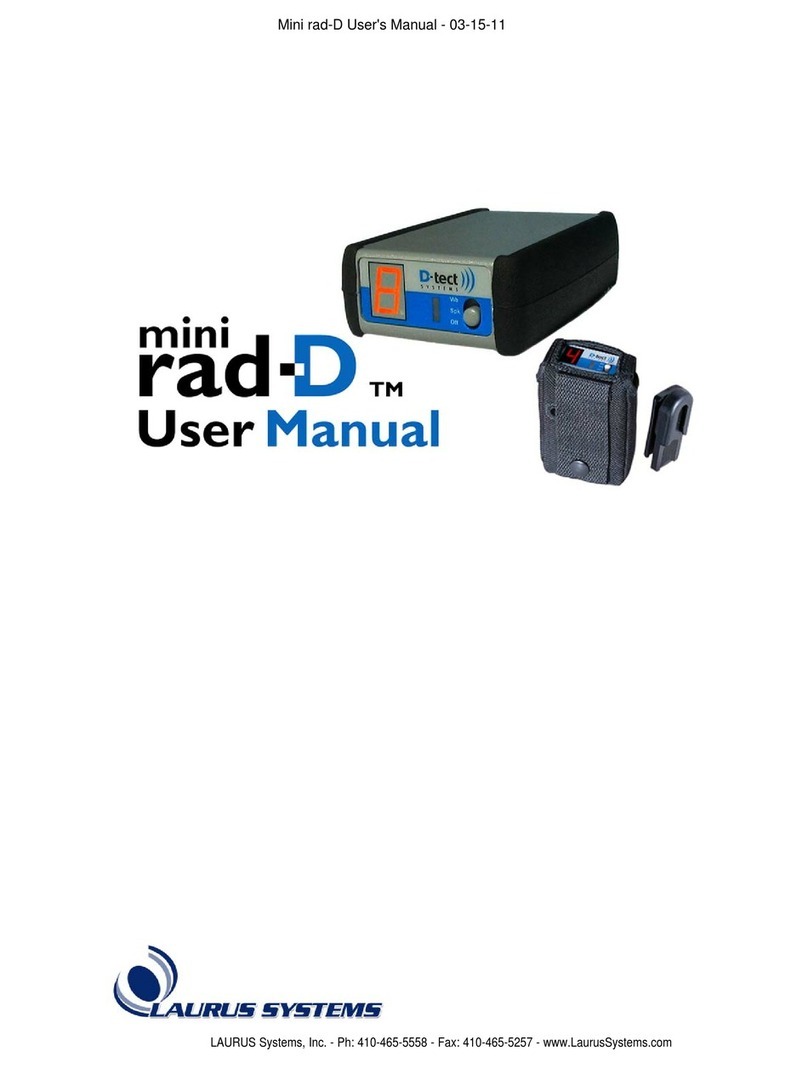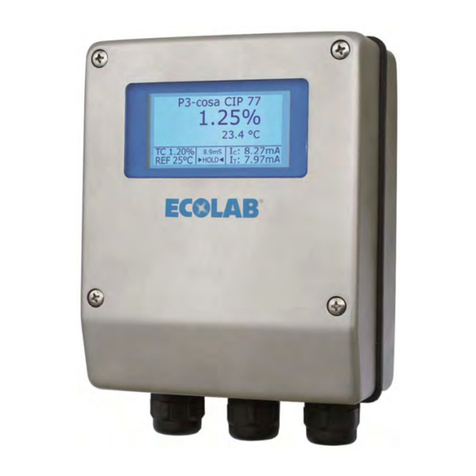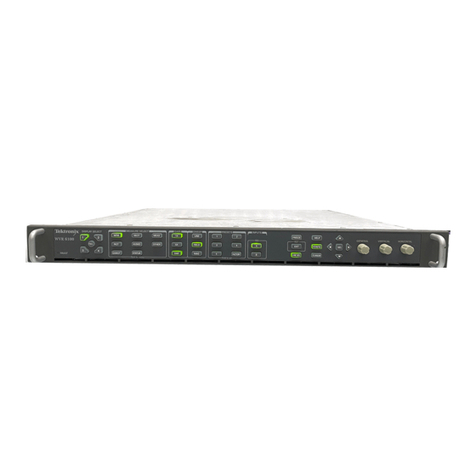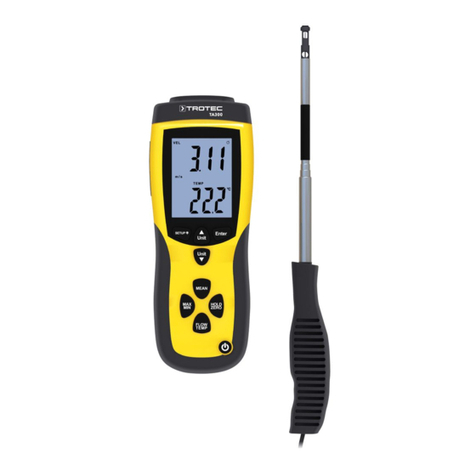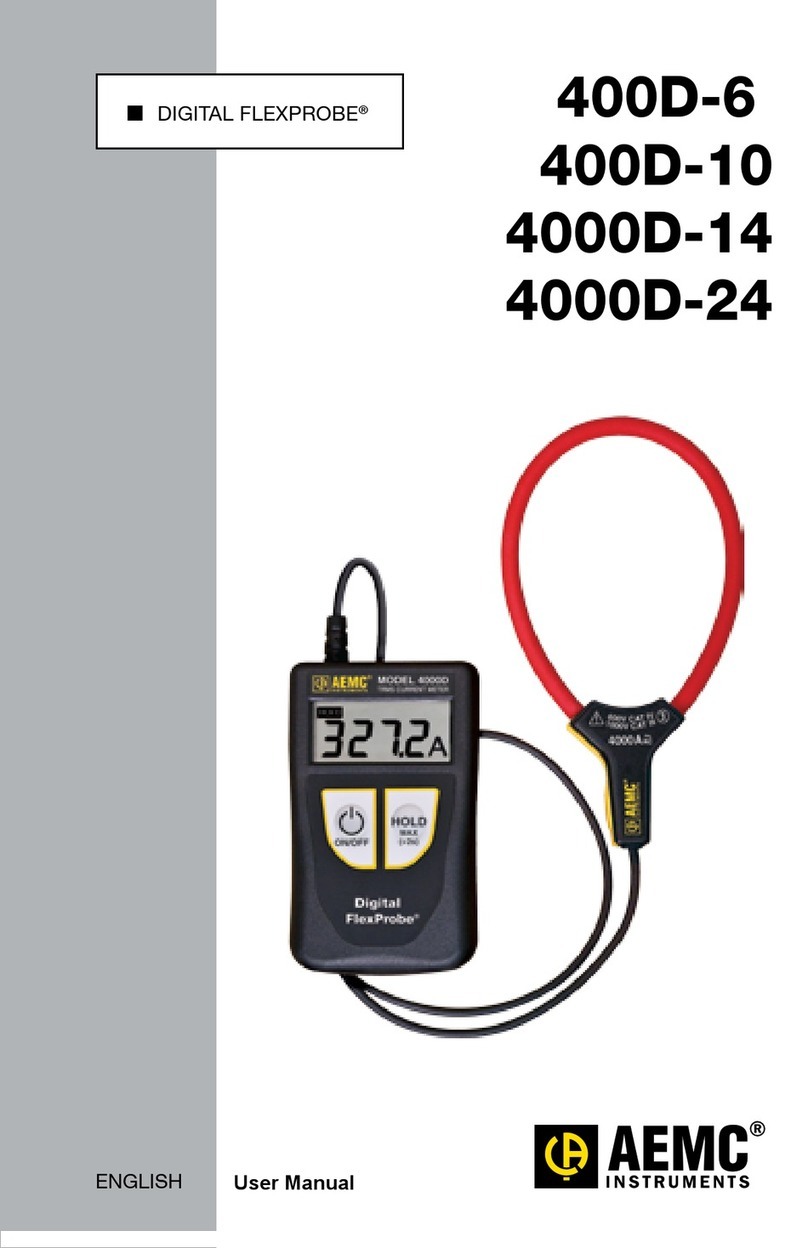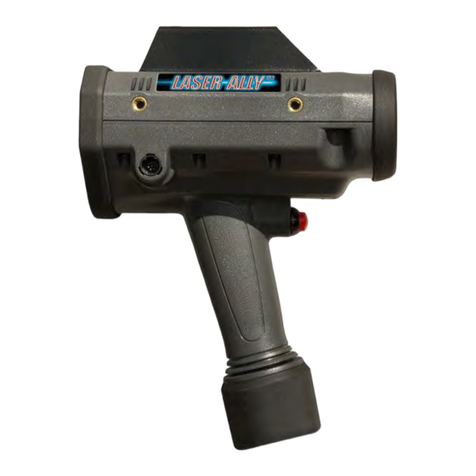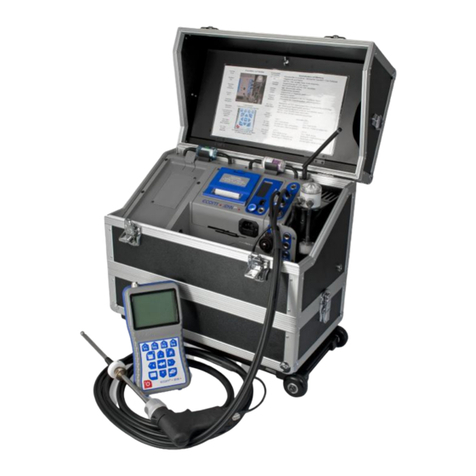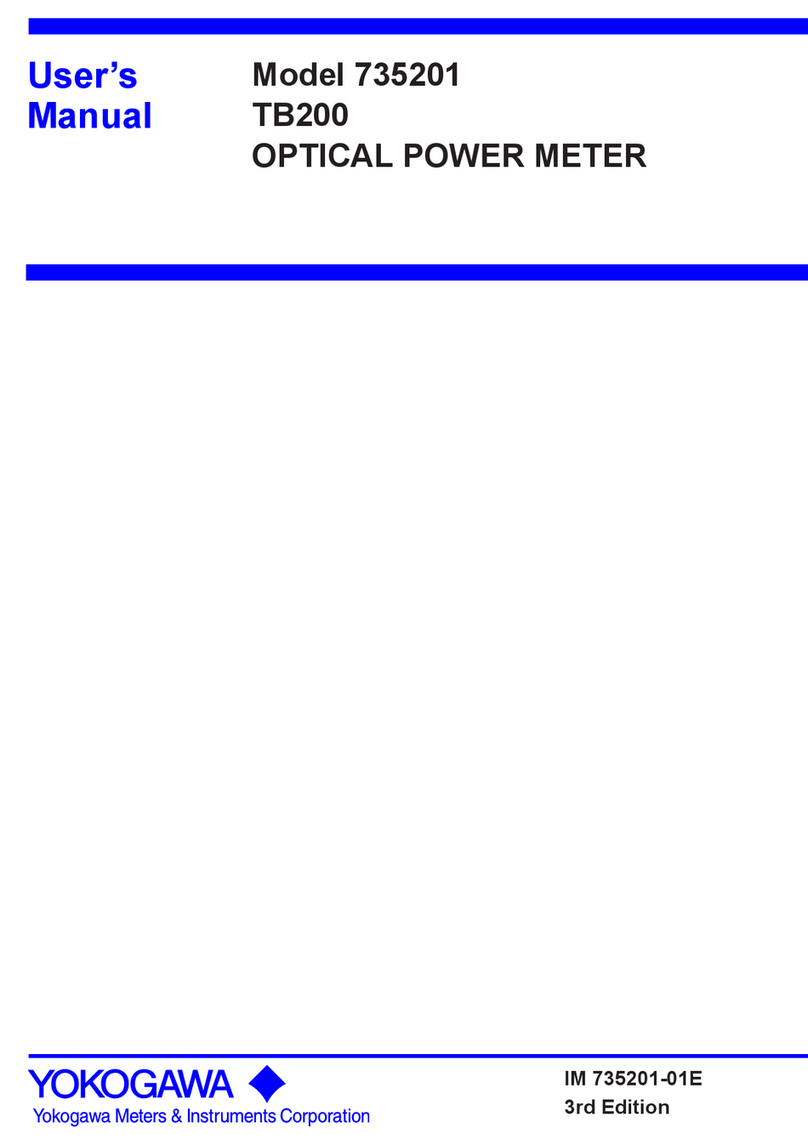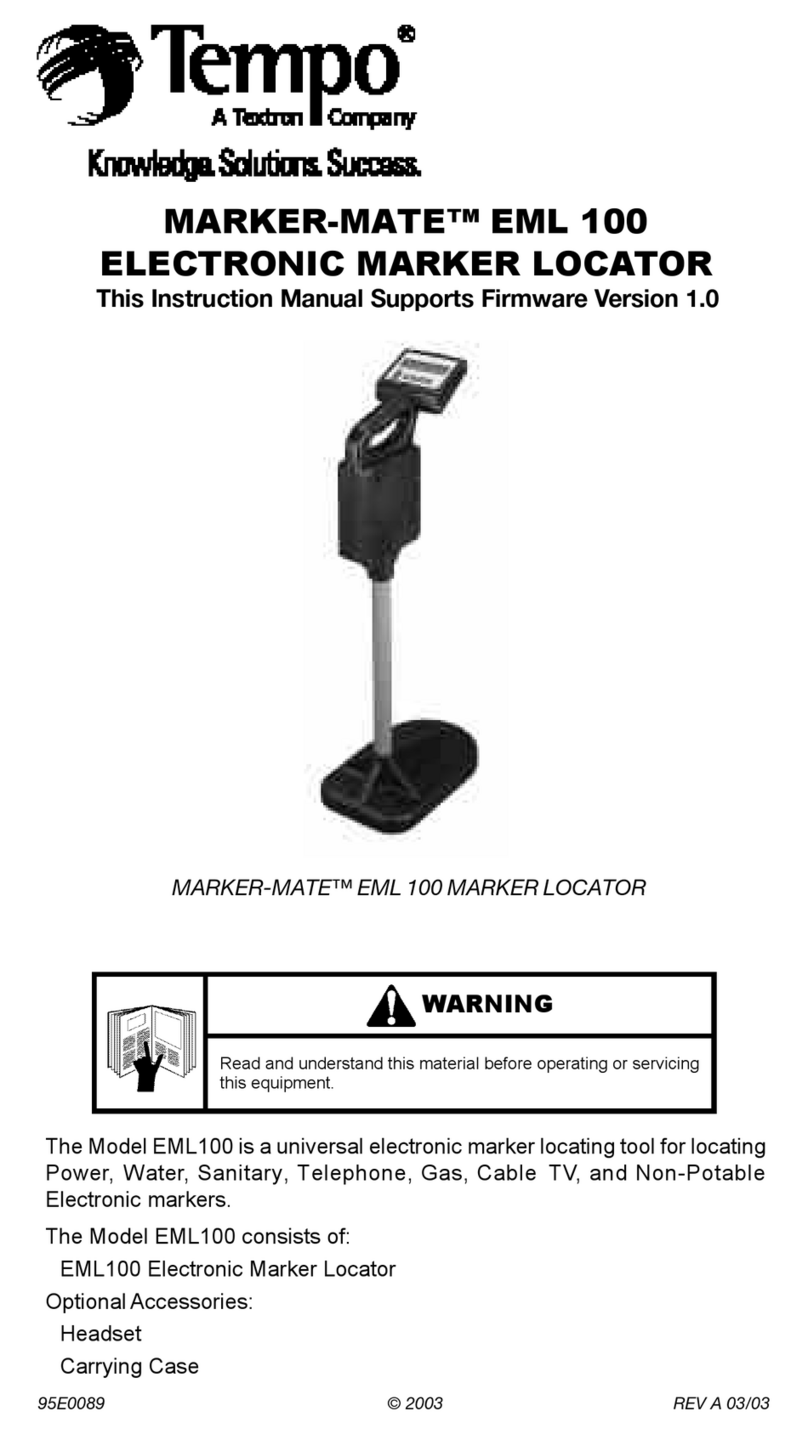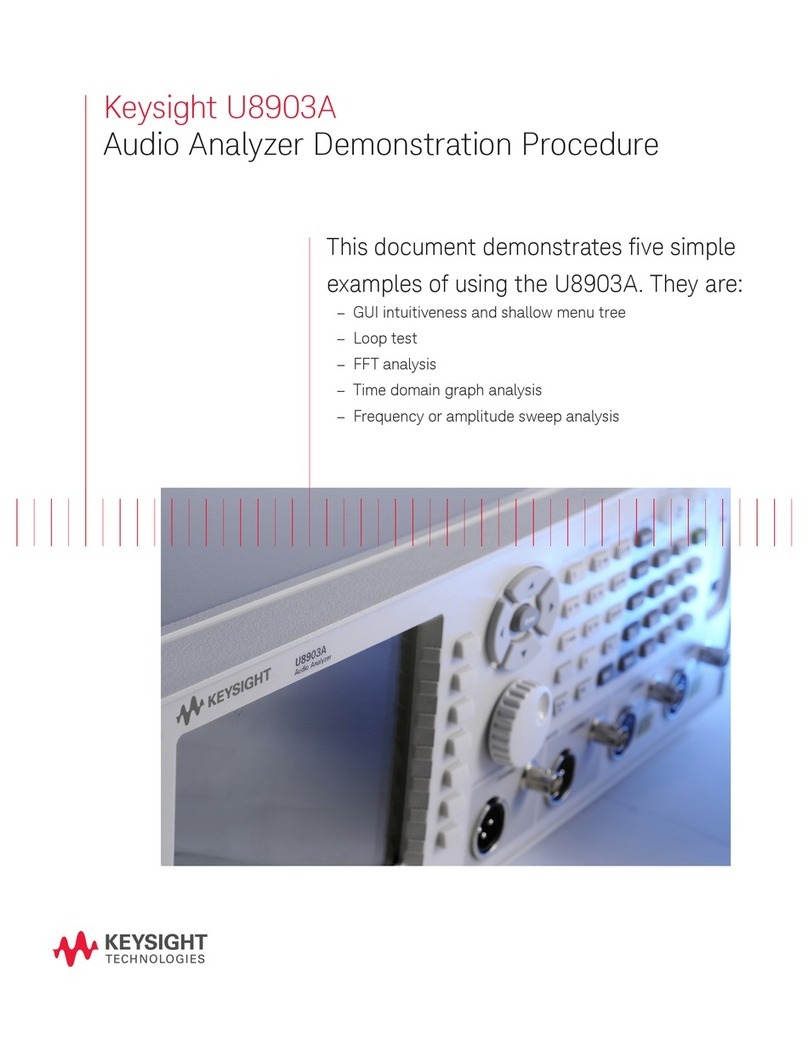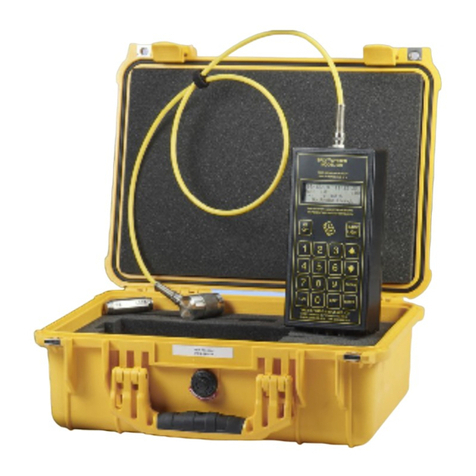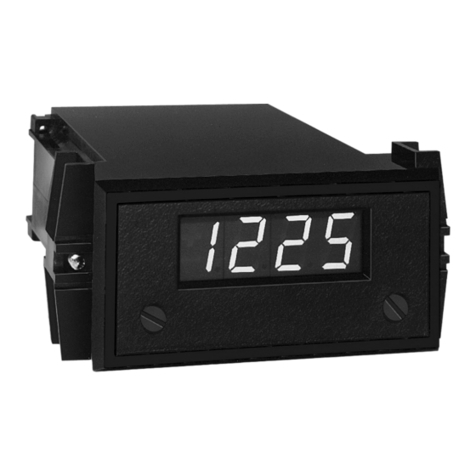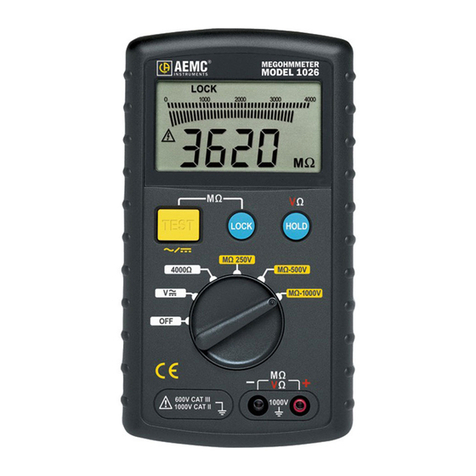Laurus Health Physics Miron Technologies DMC 3000 User manual

DMC 3000 User’s Guide
Health Physics
Division
151153EN-D

-2-
Table of Contents
1- Presentation...........................................................3
2- General...................................................................4
2.1 Use and Functionality ............................................. 4
2.2 Compatibility with Mirion Technologies Products .. 5
2.3 Historical Data Function ........................................ 7
2.4 Handling Recommendations .................................. 8
3- Operation ...............................................................9
3.1 Fast Entry Mode ..................................................... 9
3.2 Operating Modes.................................................... 9
4- States Modes.......................................................10
4.1 Run / Pause Flow Diagram ................................... 11
4.2 Browsing Diagram in Pause.................................. 12
4.3 Browsing Diagram in Run ..................................... 13
4.4 Set Point Modications......................................... 14
4.5 Data & Parameters List......................................... 15
5- Alarms ..................................................................16
5.1 Dose and Rate Alarms or Warnings...................... 17
5.2 Time Alarm............................................................ 18
5.3 Low Battery .......................................................... 18
5.4 Power Loss........................................................... 19
5.5 Faults .................................................................... 19
6- Battery Replacement ...........................................23
7- Clip Replacement.................................................24
7.1 Standard or Belt Clip ............................................ 24
7.2 Front Facing Clip .................................................. 24
8- Manual Calibration & Maintenance ......................25
8.1 Manual Calibration................................................ 25
8.2 Maintenance ......................................................... 25
9- Technical Characteristics .....................................26
9.1 Physical Characteristics ....................................... 26
9.2 Electrical Characteristics ...................................... 27
9.3 Mechanical Characteristics .................................. 27
9.4 Environmental Characteristics.............................. 27
9.5 Factory Calibration .............................................. 27
9.6 Functional Characteristics .................................... 28
9.7 Environment.......................................................... 29
9.8 Reference point of calibration............................... 30
10- Add-on Modules ................................................31
11- Accessories References.....................................32
12- CE Certicate.....................................................34

-3-
Button for
data display
Button for
parameters display
Speaker
Red flashing LED
for alarm
Connected module
indicator
Measurement unit
G2 "DMC 2000" compatible protocolAlarm type
Measurement
type
Measurement or
parameter display area Disable flash, vibrator and speaker indicators
Red LED for alarm
Green LED for gamma counting
Blue LED for Hp(0.07) or neutron counting
Large backlit display
with 8 digits
Functional indicator
"blinking"
1- Presentation

-4-
2- General
2.1 Use and Functionality
The DMC 3000 is the new compact, rugged and reliable dosimeter designed to detect a wide range of X-ray
and gamma radiations.
The large-format, backlit, high-contrast 8-digit LCD display provides clear dose and dose rate
readings for deep dose equivalent Hp(10).
Additionally, it provides multiple methods to alert the wearer of alarm conditions, including:
a high decibel speaker
1 Flashing LED on the front face
3 bright LEDs on the top
a vibrator.
(See Chapter 5 for a complete description of these alarms.)
Only two buttons for easy access to all the DMC 3000's functionality.
(See Chapter 4 for more information on button use.)
The indication of dose increment is visible with the green LED even when an
alarm is given by the two red LEDs.
The blue LED is dedicated to Hp(0.07) or neutron dose detection with future
DMC 3000 attachments.

-5-
2.2 Compatibility with Mirion Technologies Products
The DMC 3000 features an enhanced "G3" communication protocol to support additional features. It
also includes a compatibility mode for previous Mirion Technologies products including Access Control,
Turnstiles and Telemetry devices.
The compatible DMC 2000 protocol "G2" is indicated on the DMC 3000 by an asterisk in the display's bottom
right corner. This guarantees compatibility with the existing Mirion readers (LDM 220, LDM 2000 and LDM 3000)
and software (DosiServ, DosiCare and Sentinel).
The enhanced communication protocol "G3" requires new readers such as the LDM 320D, LDM 320W or
LDM 2000 with upgraded firmware.
Please contact Mirion Technologies for compatibility diagnostic and information.
Both G2 and G3 protocols use the same communication medium, with an omnidirectional, low-frequency
(125 kHz) transceiver.
General

-6-
2.2.1 Language
The DMC 3000 has the ability to display in French
and English.
Language settings can be adjusted using
dmcUser software.
2.2.2 Dose Increment Notification
The top green LED gives the rate of dose increment
(one flash each 1 µSv) associated with a configurable
audible beep (see below).
2.2.3 Remaining Time before Alarm
Displayed as a timer counting down, the time to alarm
corresponds to either the time alarm or the time to
reach the dose alarm point, whichever is shortest.
The time to reach the dose alarm point is calculated
as follows:
time duration before dose alarm = (dose alarm threshold
- cumulative dose) / current dose rate
2.2.4 Add-on Module
An additional module, such as a telemetry device can
be attached at the bottom of the DMC 3000 simply by
removing the battery cover.
All these add-on modules have their own parameters
saved on non-volatile memory and modify the confi-
guration of the DMC 3000 when attached to it.
2.2.5 Rate Alarm Latched
The DMC 3000 allows users to latch the rate alarm.
Two options are offered:
rate alarm latched 10 seconds (See Note)
rate alarm latched until exit
no audible signal for dose
increments
1 beep every 100 µSv (10 mrem)
1 beep every 10 µSv (1 mrem)
1 beep every 1 µSv (0.1 mrem)
1 beep every 8 pulses
1 beep every 4 pulses
General
Note:
This new feature is available and configurable only
in G3 protocol.

-7-
2.3 Historical Data Function
DMC 3000 series dosimeters have a historical data function which allows the following features:
Recording and storage of changes greater than 1 µSv (0.1 mrem) in the cumulative Hp(10) dose by
intervals of 10 seconds, 1 minute, 10 minutes, 1 hour or 24 hours depending on the dosimeter’s configuration.
Recording and dating of significant events such as:
alarms and warnings
acknowledgment of warnings
assignment of identifier, task and RWP codes
change in operating mode (Pause and Run)
dosimeter fault
parameter changes
In order to date accurately all the data, the DMC 3000 is equipped with a Real Time Clock to keep the clock
time. In satellite mode, this RTC could be set during configuration with a reader during entry.
If the DMC 3000 is in G3 protocol, all the events and dose increments are dated in date format (DD/MM/YYYY
and HH:MM:SS) and the time size of recording is doubled (see Note) compared to G2 (DMC 2000 compatible)
protocol where the number of histogram's steps is limited to 3800 (see §6.9 for details).
General
Note:
Calculated with an increment of dose every
10 histogram steps.

-8-
2.4 Handling Recommendations
As the DMC 3000 offers the ability to clip it either outside the pocket, (standard or belt clip) or inside
(front side clip), users should remember to wear the dosimeter with its back side facing the body.
(See label on the battery cover.)
As the energy range of the DMC 3000 starts at 15 keV, the detection area of the dosimeter should not be
covered with any heavy material, like metal, in order to ensure the most accurate dose measurement.
The DMC 3000 will warn you when the battery needs to be replaced. A completely discharged battery can cause
leakage that may damage your DMC 3000.Thus, dead batteries should be removed or replaced promptly.
Only approved batteries or high quality Alkaline batteries should be used with your DMC 3000 (see Chapter 6).
There are no serviceable parts inside your DMC 3000. Thus, tampering with the case will compromise the
waterproofing and void the warranty.
General
Warning:
For the DMC 3000 vibrator alarm to be effective,the unit must be in contact with the body for the user to feel it.

-9-
3.1 Fast Entry Mode
The DMC 3000 can be started up using a simplified and quick procedure.
Fast entry must be enabled using dmcUser software.
When fast entry is enabled, the message "ENtER" (1) is
displayed. Simply pressing one of the 2 control buttons immediately
switches the DMC 3000 dosimeter into Run mode.
The message "IN" (2) is briefly displayed.
The dosimeter switches to measurement mode (3).
The display starts to indicate the dose measurement.
Note:
As soon as the dosimeter switches back to Pause mode,the fast entry mode is
disabled.
- To return to fast entry mode set parameters again.
- If the fast entry mode is automatically set,the DMC 3000 will revert to fast entry
mode when back in Pause, assuming no alarm.
(1)
(2)
(3)
Note:
DOSIMASS-DM does not have
the ability to modify the DMC
3000's parameters.
3.2 Operating Modes
DMC 3000 dosimeter can be used in the following modes:
- Autonomous mode:
Dosimeter's two buttons can be used to set alarm set points and
switch back and forth between Pause and Run.
- Satellite mode:
dmcUser software must be used to configure the DMC 3000.
3- Operation

-10-
The sleep mode state is a low-power consumption
state where the functional indicator ":" does not
blink. It is an optional factory configuration.
When either button is pressed, or during communi-
cation with a reader, the DMC automatically goes
into Pause with a backlit display and all display
segments activate for 2 seconds.
Note:
- The first press on any push button only
turns on the backlight for 3 seconds.
(1) The configuration of the set point is available in
autonomous mode only.
(2) Done manually in autonomous mode or
with the use of a reader in satellite mode.
4- States Modes
How to configure
in automomous?
See § 4.4
How to switch
between
Pause and Run
modes in
autonomous?
§ 4.1

-11-
4.1 Run / Pause Flow Diagram
Long press >2s
T.O = Time Out

-12-
4.2 Browsing Diagram in Pause
Exemple of Data available Display
Last recorded dose
Last maximum peak rate
Last duration in Run
Current Time
(AM/PM or 24H format)
Current Date
(MM--DD--YY or DD/MM/YY format)
Parameters Display Parameters Display
Dosimeter
number
Rate warning set
point
Wearer’s name Run time
warning set point
Wearer ID Chirp mode
Dose alarm set
point
Date of next
calibration
Dose warning
set point Dosimeter mode
Rate alarm set
point
Software
version
Data list is configurable with dmcUser
(choice and order). See § 4.5 for complete list.
Parameter list is configurable with dmcUser
(choice and order). See § 4.5 for complete list.

-13-
4.3 Browsing Diagram in Run
Exemple of Data available Display
Current dose
Current rate
Remaining time before alarm in
Run
Date
Parameters Display Parameters Display
Dosimeter
number
Dose warning
set point
Wearer’s name Rate warning set
point
RWP
Run-time
warning
set point
Date Chirp mode
Dose alarm set
point Operating mode
Rate alarm set
point

-14-
4.4 Set Point Modifications
Only available in
autonomous mode.

-15-
4.5 Data & Parameters List
Data
Hour (*)
Date (*)
Full life dose (*)
Full life duration (*)
Total maintenance dose (*)
Total maintenance duration (*)
Dose (*)
Current rate (*)
Maximum rate (*)
Duration of integration in Run (*)
Remaining time before alarm in Run (*)
Parameters
User name
Dosimeter number
Type of autonomous dose
(cumulated or resettable) (*)
Date of next internal
calibration
Dose alarm setpoint (*)
Rate alarm setpoint (*)
Duration setpoint (*)
Remaining time setpoint (*)
Dose warning setpoint (*)
Rate warning setpoint (*)
Parameters
Beeps at dose change
Autonomous or satellite flag
Software version
FLASH memory checksum
Worker identifier
Worker order task code (OT)
Thermoluminescent film number
(TLD)
Radiation Work Permit (RWP)
The following data and parameter options are available in Pause and Run mode.
They can be selected and ranked by preference, using dmcUser software.
(*)This item's availability is based on the dosimeter's configuration.
For example,if the rate display is not chosen the current rate and maximum rate will not be displayed.
In G2 protocol,some data or parameters are not available.

-16-
5- Alarms
The DMC 3000 dosimeter provides multiple methods to alert the wearer of alarming conditions:
A loud audible alarm is emitted by the dosimeter speaker
A message or symbol appears on the backlit, high-contrast LCD display
Very bright red flashes from the front red flashing LED
Red flashes from the top red indicator LED
Vibrations
Note:
- In case of simultaneous alarms,
corresponding messages and symbols are
displayed based on priority level.
- Speaker, vibrator and red LED can be disabled
when configuring the DMC 3000.
This function can be factory configured or modi-
fied using the DMCUser maintenance software
in G3 protocol only.
Look at the pictogram on the top right corner of
the display to know which alarm is disabled.

-17-
Alarm Type Display Speaker Flash LED,Vibrator and Top Red LED
Dose Alarm
3 beeps
every second
FLASH LED
1 flash every second
VIBRATOR
1 vibration (**) every second
** An extra vibration is added if the speaker is disabled.
TOP LED
3 red flashes every second
Dose Warning
(See note)
Rate Alarm
2 long beeps
every second
Rate Warning
(See note)
Note :
Acknowledge by pressing +or - button longer than 3s.
5.1 Dose and Rate Alarms or Warnings
The DMC 3000 has 2 configurable dose alarms from
1 µSv to 10 Sv and 2 configurable rate alarms from
10 µSv/h (*) to 10 Sv/h.
(*) Please contact Mirion Technologies for a rate set point
between 1 µSv/h and 10 µSv/h and see § 9.1.
Dose and rate warnings are acknowledgeable by
pressing either push button for longer than
3 seconds.
The rate alarm and warning occur when the rate
exceeds the set point.The rate alarm and warning
disappear when the rate decreases to 80% of the set
point.
The pictogram on the display remains visible in
Pause mode until the next entry.
Alarms

-18-
Alarm Type Display Speaker Flash LED,Vibrator and Top Red LED
Low Battery
xx is the remaining time in Run mode from 9 to 1 hours.
Then the DMC goes into power loss for 2 minutes and
then turns off. 3 short beeps
every 10 minutes
FLASH LED
1 flash every 10 minutes
NO VIBRATOR
TOP LED
1 red flash every second
After 72 hours of low battery in PAUSE mode, the DMC
goes into power loss during 2 minutes and then turns off.
In Run
In Pause
5.2 Time Alarm
5.3 Low Battery
Alarm Type Display Speaker Flash LED,Vibrator and Top Red LED
Time Alarm 1 short beep
every second
FLASH LED 1 flash every 10 seconds
VIBRATOR 1 vibration every 10 seconds
TOP LED 1 red flash every second
The DMC 3000 emits a low battery alarm if the battery voltage drops below 1.2 V.
Alarms

-19-
Alarm Type Display Speaker Flash LED,Vibrator and Top Red LED
Power Loss 3 short beeps
every 10 seconds
NO FLASH LED
NO VIBRATOR
TOP LED 3 red flashes every 2 seconds
Alarm Type Display Speaker Flash LED,Vibrator and Top Red LED
Minor Fault
Dosimeter needs a new calibration.
none
NO FLASH LED
NO VIBRATOR
TOP LED only 1 red flash
5.4 Power Loss
5.5.1 Minor Fault
Alarms
5.5 Faults

-20-
Alarm Type Display Speaker Flash LED,Vibrator and Top Red LED
Major Fault
(Asic, EEPROM,
Detection, Data
Integrity)
4 beeps
every second
FLASH LED 1 flash every second
VIBRATOR 1 vibration every second
TOP LED 3 red flashes every second
Alarms
5.5.2 Major Faults
The DMC 3000 conducts periodic self tests every 10 minutes in Run, Pause and Sleep modes. Most of the tests
are also performed every second in Run mode.All the main functions are controlled by the microcontroller and
all the data, parameters and configurations integrity are protected by the CRC16.
The calibrations and algorithm parameters are protected by the CRC16 and saved inside a specific and dedica-
ted EEPROM.The different DC voltages on the electronic board are periodically measured and controlled.
If a fault is detected,an alarm is generated and a message is alternately shown with the measure on the display.
This faults indicates that the dosimeter is not totally functional.The device must be verified by Mirion technicians.
Table of contents
Other Laurus Measuring Instrument manuals

